
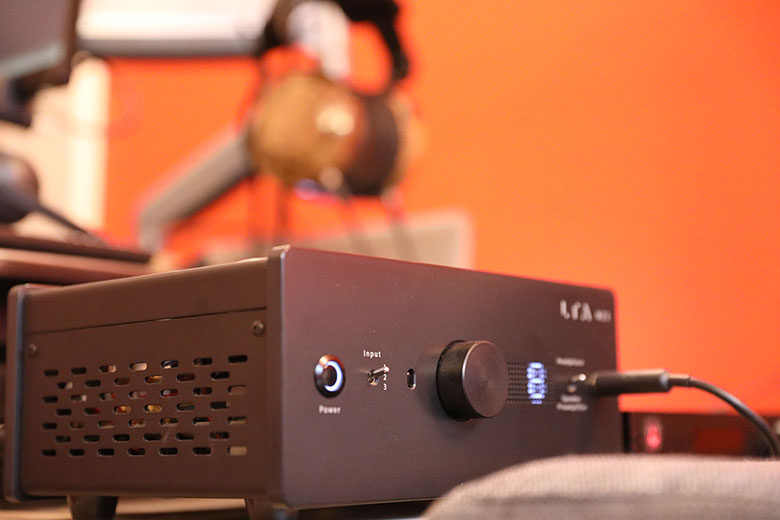
The Master Switch


The Master Switch
Chances are, buying a headphone amplifier is the first step you’re taking in your journey to great audio. Headphone amps are an easy, fun, and affordable way to boost your sound quality. But how do you choose the right one? In this article, we’ve broken down the key steps to choosing a headphone amp, from sound quality and portability to included DACs and wireless audio. For a look at our top picks, see our article on the best headphone amps.
The first decision you have to make when choosing a headphone amp is whether to go for a portable version, or one that sits on your desk. The differences are obvious from the beginning. Portable amps tend to be smaller, designed to slip into a pocket or a bag next to your phone. They are also more likely to have a Bluetooth connection. However, they’re reliant on battery life, and typically have fewer features than their larger desktop cousins, which are optimized for sound quality.
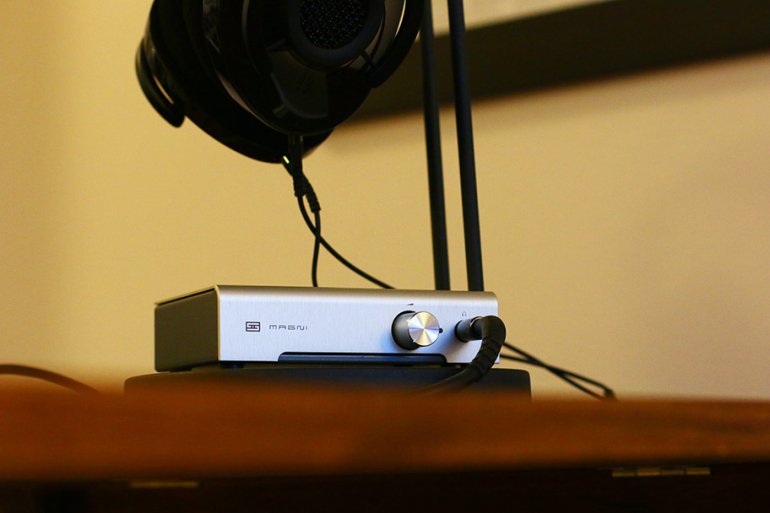
In your research, you’ll find that smaller, portable amps don’t necessarily cost less than desktop versions. For example, the FiiO Q5 (full review here) is a $350 amp that is fully portable and is quite comfortable sitting next to your phone in your pocket – assuming you’re a man, of course, because clothing manufacturers clearly don’t think women need pockets. Contrast it with the $119 Schiit Audio Magni 3+ (full review here), which is designed to sit next to a laptop and needs to be plugged into the wall. The Q5 is a good amp, but the Magni 3 is one of the best we’ve ever used. In other words, don’t worry about cost for now. Just pick the type of amp that best suits your situation and figure out the rest later.
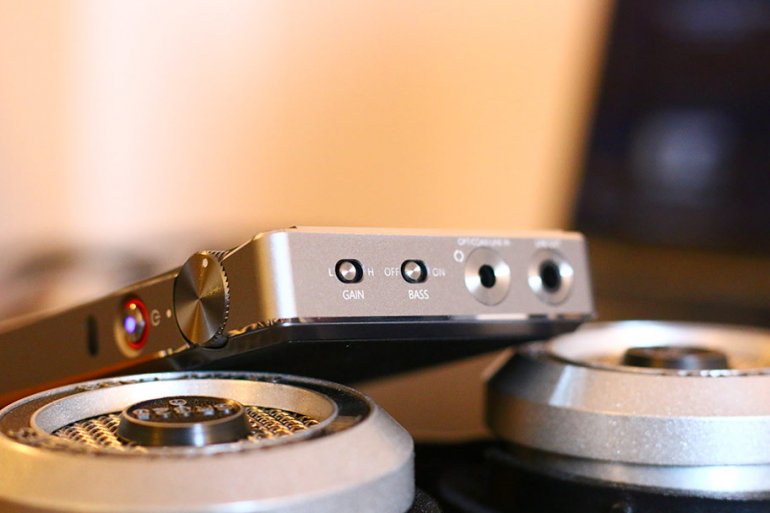
The number one goal of any headphone amplifier is to boost the sound quality of your headphones. It’s to replace the crappy amp circuitry in your phone, tablet, or laptop, outsourcing the work to a set of components that do a better job. And generally speaking, almost any headphone amplifier will give you an instant and noticeable boost in your sound quality. The quality of the amps on the market these days, even inexpensive ones, is very good. You should notice an immediate difference.
There are many different components that affect just how good the sound quality boost will be, and we discuss them in detail in the sections below. However, one of the best tests for whether or not your amp is directly improving your sound is simply: your ears. If, after a few hours of listening, you can’t detect a real difference between what you were originally listening to and the same audio through your headphone amp, it’s time to return your purchase. You should settle for nothing less than a noticeable jump in sound quality.
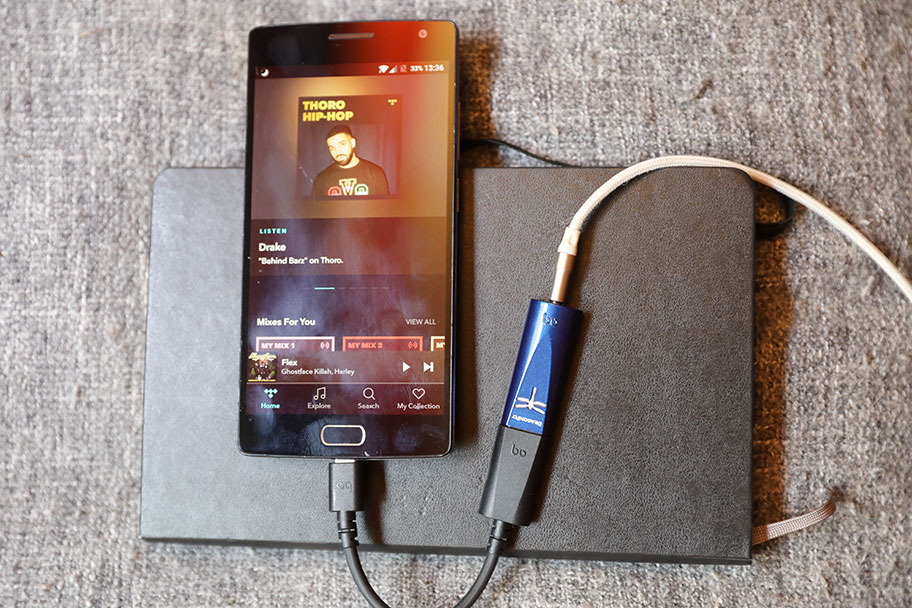
If you’re listening to any sort of digital audio, like music from a streaming service, then it needs to be converted into actual analog sound. If that doesn’t happen, you won’t be able to hear it. To get this done, you need a DAC (Digital-to-Analog Converter). Chances are high that you’ve got one already – they’re found in all smartphones, laptops, and any tech that plays music or sounds.
Any headphone amplifier has to pair with a DAC. Unless you’re listening to music that is already in the analog domain, like vinyl, there’s no getting away from that. When you’re choosing a headphone amp, you have a couple of options to make this work in your favor. You can continue to use the DAC tech in your phone, laptop, or tablet – all you need to do is connect it directly to your amp with a 3.5mm-to-RCA cable (like this one). You can insert a dedicated DAC box between your amp and your source, which is great if you value sound quality above everything else. Or, if you want the most convenient option, you can buy a headphone amp with a DAC already included. This will connect directly to your device via USB.
Audio purists will sniff at this, preferring to go for separate boxes for everything. We say: screw the audio purists. A combination headphone amp/DAC is a beautiful thing, simplifying your situation while providing you with excellent sound. Right now, we think the best combo on the market is the $300 AudioQuest DragonFly Cobalt (full review here). It’s a remarkable little gadget: a tiny USB stick with a full DAC and amp inside it, and it delivers outstanding audio quality. It will simply make your life better.
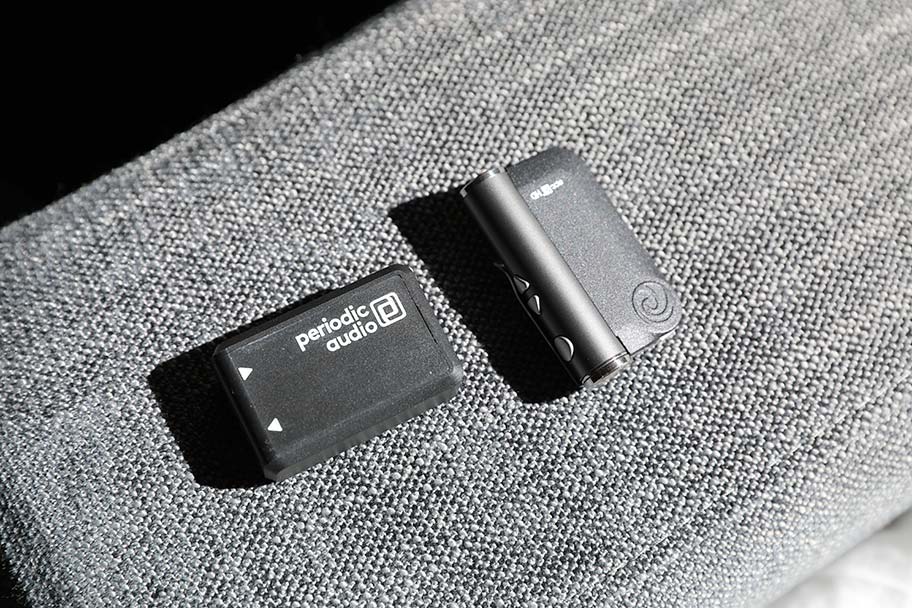
Headphone amps frequently come packaged with full Bluetooth capabilities, which is something we are very much in favor of. It’s a convenient feature, and if you don’t want to have long cables tangling your gear, it can make a world of difference. To use this, you will connect your headphones directly to the amp via a cable, and then connect that amp to a source device (like your phone) via Bluetooth. In this way, your phone could be in your bag playing your favorite Spotify playlist, while your headphones are connected to a concealable headphone amp – like this Bluewave GET (full review here) - clipped to your jacket. This setup will not only sound better than a pair of wireless headphones, but also allows you to make traditional wired headphones wireless.
Although it’s true that Bluetooth connections still haven’t approached the fidelity of physical wires, the improvement in technology has reduced the quality drop to the most minute details. If you want to minimize this even further, make sure you buy an amp capable of receiving aptX or aptX HD, and preferably one with Bluetooth 5.0 (more on what these are here).
You’re more likely to find Bluetooth on portable headphone amps, so those are the models you should focus on if wireless listening is high on your list. It’s even possible to use a headphone amp with wireless headphones! You just have to connect them to the amp with a dedicated cable, bypassing their own internal amp. As long as they have a 3.5mm input, which most do, you’ll have no issues. This way, you can use your wireless headphones on the go, and then connect them to a portable or desktop amp when you want a boost in sound quality.
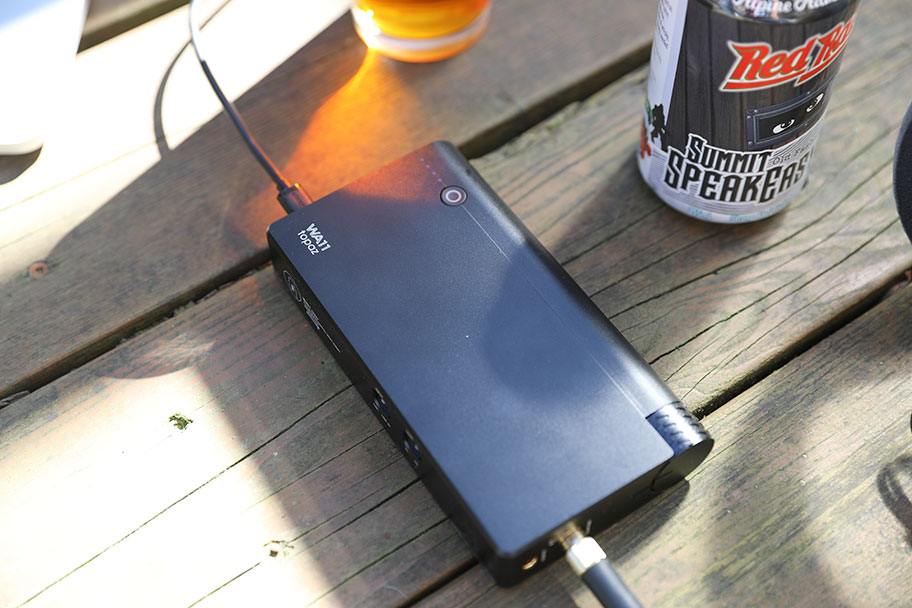
Want to hear the good news? It’s entirely possible to get a great headphone amp for as little as $66. That’s the current price of one of the best budget headphone amps we’ve ever tested: the Bravo Audio V2. Headphone amps are one of the few product categories where you can get some genuinely excellent stuff for affordable pricing. What this means is that you should make your features wish list before you even start worrying about the cost. Making sure the headphone amp meets your needs is your first priority.
Of course, if you want to go another direction, it’s very possible to spend thousands and thousands of dollars on a headphone amp. It’s also true that you get what you pay for. We had the amazing LTA microZOTL MZ3 in our testing room for a bit, and it was a revelatory experience. At $3,700, we would have been stunned if that wasn’t the case. The bottom line is that you can spend just about any amount of money you like on a headphone amp.
Like other specialist audio gear, you’re very unlikely to find headphone amps in your local drugstore. You are far better relying on Amazon, or on specialist online or physical retailers. These outlets will have a much wider selection, and if you work with a dedicated sales person, you’ll almost certainly end up with an amp you’ll be proud of.
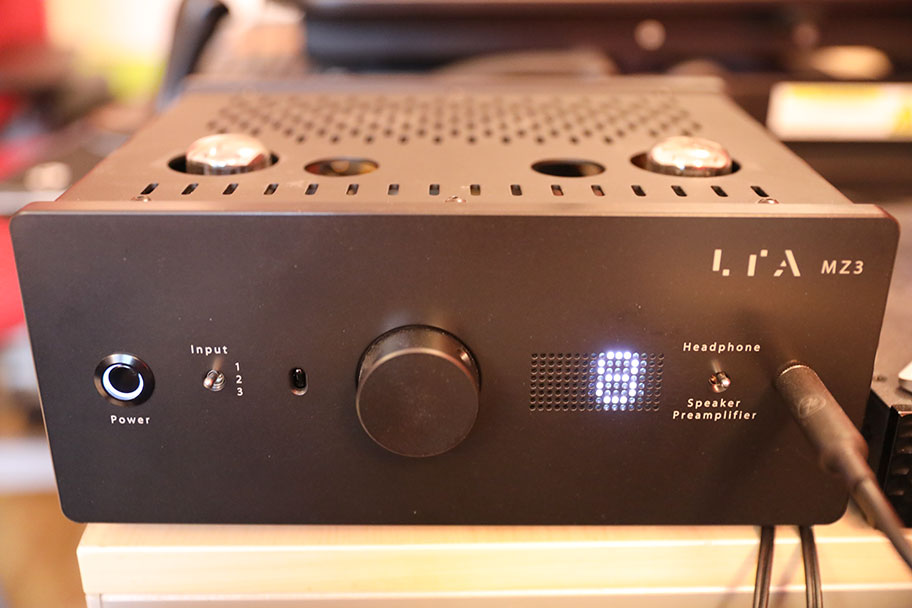
If we could get clickbaity for a second, here’s a dirty secret that audiophiles do not want you to know. Just about any headphone amp will power any headphones without any problems at all. You could attach the biggest, most expensive amp in the world to a pair of tiny earbuds and, unless you blast the volume to ridiculous levels, it will work out just fine. When you’re considering which headphone amp to buy, and how to choose one, you can rest assured that they will almost certainly power your existing headphones without any problems.
If you’re still not assured, then there’s an easy way to lock this down. Take a look at your headphone impedance. You’ll find it on the spec sheet measured in ohms (Ω), which shows the amount of electrical resistance the headphones have. Then take a look at the specs of your chosen headphone amp. Most should give a range of acceptable headphone impedances that will look something like this: 16-600Ω. As long as your headphone impedance falls inside those two numbers, you’re golden. Conveniently, our list of the best headphone amps of this year contains a handy specs table detailing each amp’s impedance range.
If you want to get even more technical, there are ways to ensure that your amp is delivering exactly the right amount of power to your headphones in order to lift the sound quality to maximum levels. Essentially, when a headphone amp interacts with a pair of headphones, variances in the electrical signal might cause very minor audio glitches, like a slight hum in the background. You can avoid this by using what is known as the Rule of Eighths. Take your headphone impedance and divide it by eight. That should be the ideal output impedance of your amp. So, for example, a pair of Meze Audio 99 Classics (full review here) - a brilliant pair of Romanian over-ear headphones that cost $309 - have an impedance of 32Ω. Using the math, their ideal amp would have an output impedance of 4Ω. However, you only have to do this if you really want to. Your headphone amp will sound great with your headphones, regardless.
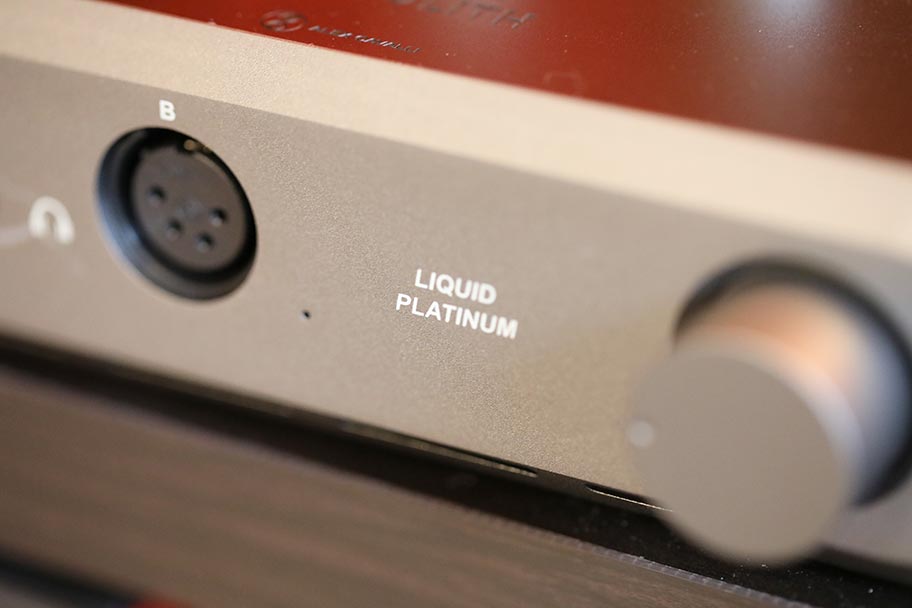
Once you start getting deep into headphone amps, things can get complicated pretty quickly. If you’re planning on spending a little money, one of the decisions you need to make has to do with balanced or unbalanced connections. But what are these, and why are they important?
When we talk about balanced and unbalanced connections, what we’re actually talking about is headphone cables, and an amp’s ability to accept them. An unbalanced headphone cable is one with two wires (a signal wire, and a ground wire), which means that any standard 3.5mm or 6.3mm connection will almost certainly be unbalanced. Balanced cables, on the other hand, have three wires (two signal wires, one ground). The connections tend to be a bit chunkier, like large XLR connections. The main difference is that balanced connections lower distortion in the audio, and if your headphone amp has an output for them – you can see one on this Monoprice Monolith Liquid Platinum (full review here) - it will almost certainly be reflected in the price.
Broadly speaking, there’s nothing wrong with an unbalanced connection. You should only choose a headphone amp with a balanced connection if you really want to extract the absolute maximum level of audio information from your headphones, and you have the budget to match.
.jpg)
Another choice you’ll have to make is whether to go for a tube amp or a solid state amp. This is an important choice, as it will affect the type of sound you get in the end. Solid state amps are more common, and rely on discrete internal circuitry to transmit the sound. Tube amps, however, push this sound through glass vacuum tubes, which not only have the benefit of presenting a different type of sound quality, but also look really cool – and can be swapped out for other tubes if you want to customize things.
It’s pretty easy to tell if an amp is solid state or tube, on account of the presence or absence of giant glowing glass tubes. Solid state amps tend to sound more neutral and clean, while tube amps boost the mids and the bass for enhanced warmth. These are not hard and fast rules, and different apps will have different characteristics, but it means you can choose the type of amp you like based on the type of music you listen to. If you enjoy classical music, for example, you may not want to listen through a tube amp.
The biggest downside to tube amps is that they can be finicky and the tubes need some time to warm up before they sound their best – in some cases, up to half an hour. The sound is rewarding, but they’re not for those who just want a plug and play solution. If that’s you, a good solid state amp is the way to go.
.jpg)
Several headphone amps come with gain switches, and before you go shelling out for one, it’s worth talking about what gain actually is. Gain is the amount an amplifier can increase its signal. It’s different from volume - more like the base that the volume starts on. A high gain means that the volume will already be quite loud, even at low levels. Low gain means that it will be very soft. The best analogy we’ve come across states that gain is a bit like the gears in a car - first and second, for example - and volume is the throttle.
Switching between hi and low gain can change the sound for the better. If you have an especially sensitive pair of in-ear headphones, then having the option to lower the gain is beneficial, as it will result in clearer sound. And as a rule, you should always try and start from a lower gain point if you can. In terms of buying a headphone amp, choosing one with a gain knob can be useful if you have multiple pairs of headphones, or you enjoy tweaking the fine details of your sound. Otherwise, it’s not something you need to worry about.